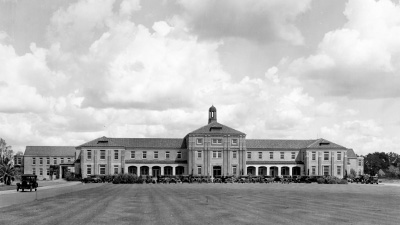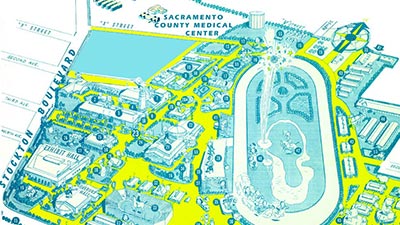The Gold Rush era brings a flood of people to the Sacramento Valley
Like most of California, Sacramento was a quiet, wide open place until the middle of the 1800s. Then in January 1848, James Marshall saw something shiny in a creek along the American River. By mid-1849, gold changed everything. People flooded into the territory by the tens of thousands.
More than 90,000 people made their way to California in 1849, according to historical estimates, and by 1855, more than 300,000 people had survived their hard journeys to the new state. About half crossed the thousands of miles of wild American country by land, the rest crowded onto ships and sailed to ports like San Francisco. Some then boarded riverboats heading up to Sacramento, others trudged by land toward gold country.
By one count, in April 1849, Sacramento was a settlement of about 150 people, mostly bunched along the Sacramento River. A year later, the population was nearly 10,000. Many arrived already sick, weakened by poor food, bad water, exposure and other hazards of the grueling trip west. Most had left their homes looking for gold or wealth. They arrived seeking medical care.
The Sierra foothills, then often called the El Dorado (after the legendary city of gold), were the sites for mining. For much of California, Sacramento was the medical center — if it could be called that — in the middle of the 1800s. If anything, in 1850, it was a collecting point for health tragedy.
The need for hospitals
Sacramento had only a handful of doctors in 1850. A few were well-trained and well-intentioned, but others were poorly trained imposters or medically trained swindlers. In addition to the health challenges of the trip west, mining accidents and gunshot wounds, people battled malaria, scurvy, dysentery, pneumonia, typhoid fever and more. Gunshot wounds were the leading cause of death in many of the gold mining counties around Sacramento.
There was no hospital in Sacramento until 1849, when two doctors converted a store in an adobe building attached to Sutter’s Fort. The small, for-profit hospital charged $16 a day for a private room and $10 a day for the ward. Surgery was extra. This was when the average fee in America to see a town doctor was $2, and many workers earned 10-20 cents an hour. (In gold-fueled Northern California in the 1850s, everything, including medical care, was steeply overpriced compared with the rest of the country.) Later that year, a hospital opened inside the fort walls with somewhat reduced rates, but one doctor wrote that not more than 20% of the sick could afford the still-exorbitant rates.
Neither of those hospitals lasted long. Other private hospitals set up in the busy blocks along the Sacramento River, some of them with canvas for walls. Most were destroyed by the nearly annual winter floods, including a particularly devasting river surge in 1850. By one report, the waters rose nine feet in 24 hours at 7th and P streets. A writer described “tents, houses, boxes, barrels, horses, mules and cattle sweeping by with the swollen torrent.” The flood swept across the city, deluging the makeshift hospital buildings and drowning scores of patients who were not well enough to leave on their own power.
A devastating cholera outbreak added more misery in October 1850. It was sparked by a man who died not long after arriving on the New World, the ship that also brought Sacramento the news of California’s statehood. In Sacramento, the disease killed 1,000 people in three weeks and sickened another 1,000 people. Much of the city’s population fled, unfortunately spreading the deadly epidemic into the surrounding foothills.
The community began to ask its new government for help. A newspaper called The Placer Times called for a city hospital. So did many well-meaning doctors. A Gold Rush pioneer named David Dustin wrote in 1850, “Give me health, and California is a pretty good place to make money. But give me sickness such as I have seen here, and hell can’t be far off.”
Answering the need — slowly at first
That year, the Sacramento City Council appointed a hospital committee to find a way to care for the indigent sick — by far the majority of patients — but their efforts did not go particularly smoothly.
The first Sacramento City Hospital was still being built in 1850 on the block bounded by 9th, 10th, I and J streets (now Cesar Chavez Plaza) when a storm blew in and leveled it, at a loss of $14,000 in sunk construction costs.
The city regrouped and joined with the County of Sacramento to build a Sacramento County hospital for the indigent in 1953 at the corner of 10th and L streets on what is now a corner of Capitol Park. The space was immediately too small. In 1857, a report in the State Medical Journal complained of dehumanizing conditions at the Sacramento County Hospital, which helped spur state officials to develop a plan for all California counties to provide care for the indigent sick.
Sacramento County reacted in the late 1860s. It bought 65 acres at what is now the corner of Stockton Boulevard and X Street for $11,000. It built a 216-bed, $80,000 facility that was finished in 1870 and opened for patients in early 1871. Although this hospital was an improvement, it drew a new set of complaints — some people were unhappy it was outside the then-city limits and three miles from the center of town.
The building lasted until Oct. 5, 1878. That day, a huge fire destroyed the structure — fire was a constant threat in that era of wood buildings and poor water supply. Hospitals seemed especially vulnerable. Sacramento lost other hospitals, as well as a range of home and buildings, to fire through the 19th century.



